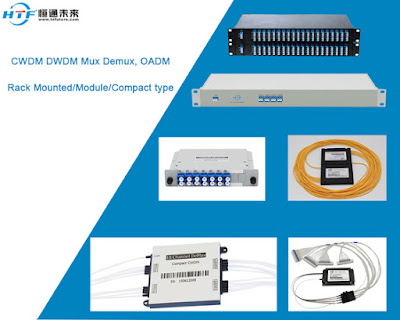What are the Benefits of DWDM Networks
By deploying a DWDM network, you will gain the following benefits:
High Bandwidth and Capacity: DWDM technology achieves higher bandwidth and capacity by multiplexing multiple wavelengths of signals on a single optical fiber compared to conventional devices. In the backdrop of the ever-growing demands of the internet and communication, the high capacity becomes especially critical, especially in domains like high-definition video, cloud computing, and the Internet of Things.
Long-Distance Transmission: DWDM technology employs wavelengths with minimal signal loss in the optical fiber transmission process. When paired with Transponders/EDFAs, it can even transmit signals over thousands of kilometers. This attribute is especially important for connecting remote cities, spanning international borders, and linking data centers across continents. The extensive long-distance transmission capability of DWDM greatly extends the reach of data communication, effectively facilitating seamless global connectivity.
High Reliability and Redundancy: In a DWDM network, each wavelength operates independently, ensuring that a failure or disruption in one wavelength doesn't impact the operation of other wavelengths. Furthermore, it can be complemented with Optical Line Protection (OLP) for additional line redundancy, and the utilization of dual cards allows for business redundancy. This formidable redundancy bolsters network reliability, guaranteeing seamless data transmission without interruptions. This attribute holds significant value, especially in settings where demanding reliability and stability are prerequisites, ensuring a consistent assurance of data transmission.
Cost Reduction: DWDM technology permits high-capacity data transmission over existing optical fiber infrastructure, eliminating the need for new fiber installation and reducing overall network deployment and maintenance costs. This cost-effectiveness makes DWDM technology particularly attractive in practical applications.
Flexibility and Scalability: DWDM networks possess the capability of dynamic configuration and management, which can be achieved by coupling with Reconfigurable Optical Add-Drop Multiplexers (ROADMs) to enable remote and flexible service allocation. This adaptability empowers the network to accommodate continuously evolving communication requirements. As data traffic escalates, scaling network capacity is as simple as incorporating additional wavelengths. In the coming years, with advancements in communication technology, DWDM networks will provide a more extensive selection of wavelength choices, obviating the necessity for extensive infrastructure overhauls.



Comments
Post a Comment